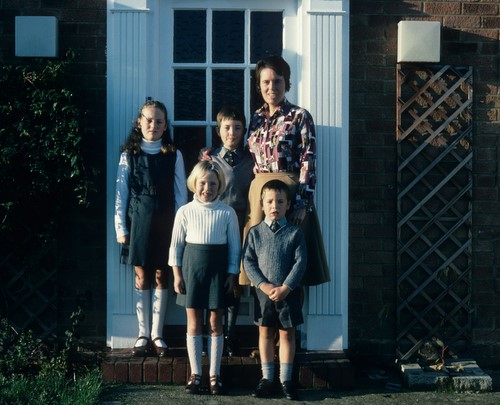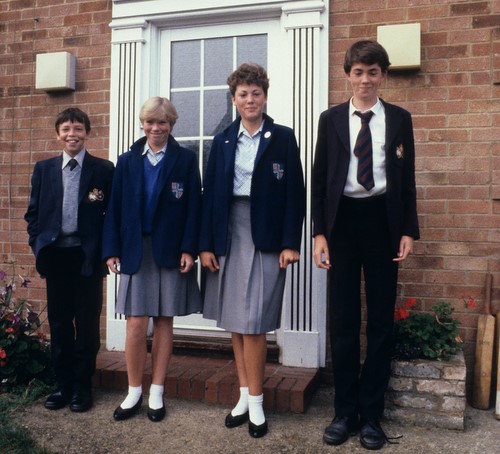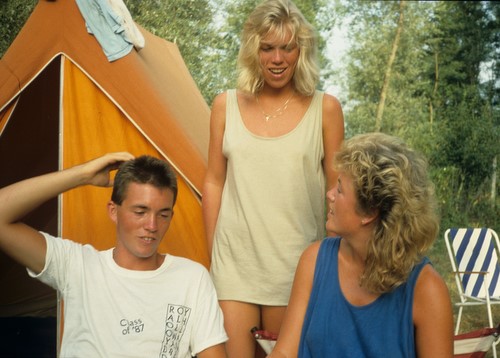Popped over to see my parents yesterday, who were staying with my younger sister, Hester. B-in-law William showed me the wines he had lined up for dinner – Ducru Beaucaillou 1996 St Julien, and Bruno Clair Corton Charlemagne 2004. These were both from cases that he’d just had delivered from Justerinis, and there’s an interesting story behind the Bruno Clair.
Some time ago we drank a bottle of the 1996 Bruno Clair Corton Charlemagne, and it was thrilling – one of the best white Burgundies I’d had in a long time. Crisp, complex, taut and ageing beautifully. It was the first bottle of a case, and as William went through the case the next couple of bottles were both orange and oxidised. The curse of premature oxidation which has been haunting white Burgundy, and which began in 1995/1996: people began to find that some bottles in a case were fine, others were shot.
No one knows exactly why. It’s likely that there’s some underlying frailty of the wine that is then exposed by the variable oxygen transmission levels of the corks. Cork was going through a bad phase in the mid-to-late 1990s. With white wines, it’s not uncommon to see little change in the wine as the sulphur dioxide is used up, and then the wine suddenly falls off a cliff and oxidizes quite fast. The efficacy of sulphur dioxide also changes quite a bit with pH (it’s much more effective at lower pH). But no one really knows for sure why white Burgundies are more frail than they used to be.
I helped Hester load some pictures onto her Mac, and in the process found some old family pictures. The top picture is probably from Arthur’s first day at school (he was born 1971, which makes it c. 1976, when Anne and I were 8 and Hester 6). Above is his first day at RGS High Wycombe (the girls were at Beaconsfield High School). I was in fifth form, and I’m still wearing the blazer I started with aged 12 – you’ll notice that Arthur’s blazer is a little large for him. Below we’ve fast-forwarded to 1987. Don’t you love those 80s haircuts? I’ve just finished at Royal Holloway in this picture, and we’re on a family camping holiday.
12 Comments on Some old family pics, and some thoughts on premox





I’ve grown into the blazer now.
Regarding the premox issue you will also note a change in colour of many of the corks themselves from this period. Because of the loud conversation that was occurring over TCA taint, many cork producers changed their sterilant from chlorine to peroxide. Chlorine was regarded as a precurser to TCA and so a move was necessary. Peroxide of course was a bad move. Not only did the corks look too pale, but they became implicated in the random oxidation scandals in Oz and NZ that pushed those countries further towards screwcap. I have no idea if these peroxide washed corks are the reason for the premox issue in burgundy, but the timing (approx 1998 – 2002) is identical. No idea also what genius would have suggested putting peroxide anywhere near a product that we are trying to keep away from oxygen, but yeah, go cork industry!
Premature oxidation in Chardonnay hit Australia really badly in the late 90’s. Riesling also took a hit and it is hard to find good examples of whites from those years.
Most are of the opinion that it was the use of ascorbic acid as an anti-oxidant (anti-oxidant 300)as a pre-bottling precaution, particularly when used in conjunction with quite low SO2 levels (as was also de-rigeur at the time). Ascorbic (also known as Vitamin C)mops up the oxygen, and in turn goes to hydrogen peroxide. In theory the free SO2 mops up this hydrogen peroxide before any damage occurs, but if the SO2 falls below a certain level the mopping up is incomplete or too slow – rapid and disastrous browning takes place. I’d also expect that the fad for the riper styles of the time meant wines with higher pH and hence less effective SO2. Put together trends in winemaking and a new technology – brown wine!
On the positive side, most winemakers are now aware of this and avoid late adds of ascorbic. It would still be used on fast turn-over wines such as NZ Sauvignon Blanc. On the negative, the powers that be, in their collective wisdom, have decided to remove the requirement for mandated listing of ascorbic on labels, so you cannot guess which wines are at risk if matured.
Given the nature of the reactions taking place, the closure is largely irrelevant.
Cheers.
Dan, thanks for that insightful comment. Quite agree.
This is very interesting and is in line with the experiences of Chris at thirtyfifty who when interviewing us about the nanaocork(tm)told us that he was finding the same in older wines as well as experiencing problems in newer New Zealand wines under screw cap. I do have a vested intertest but as an expert and author on the matter Jamie will I think agree that the closure is all important. Our perspective, biased as it may seem, is that a natural cork closure without the variability that existed in the past is the win win solution for certain wines in the future.Love the pictures by the way – we have some similar ones and they always make us smilewhen we roll them out.
Interesting, Jamie, but you are very wrong with regard to when the premox started. Here in Norway my friend and Burgundy expert Dr. Per Mæleng (now Special Advisor to the Norw. Wine Monopoly) wrote his first article about premature oxidation in white burgundies in 2000 for Vinforum (www.vinforum.no). As far as I can tell, this was the first public airing of this specific problem. Very interesting to read about similar trouble in Australia.
Per’s article is not online as far as I know.
Ole, you are right it wasn’t spotted until then, but the problem was first really noticed with the 96 vintage wines and then people realized 95 was problematic too, but not to the same extent. Do you agree? I’m happy to be corrected if my version of history is somewhat revisionist.
Jamie regarding timing, it appears you are correct (although I am sure you mean ’95 and ’96). I cut this out of The Sunday Times website “The wines worst affected include some of the most prestigious in Burgundy, including Meursault and Montrachet. The problem was noticed in the 1995 wines but Steven Tanzer, an American critic, was the first to raise the alarm in public when the 1996 vintage turned out to be similarly blighted. The problem seems to have intensified since. Although producers appear to be in denial, foreign experts have set up a website called “oxidised burgs”.
“It has affected between 9% and 23% of the very top wines of each of the top vintages from 1996 to 2001,” says the website, “and those percentages seem likely to rise with time.”
yes, meant 95 and 96 and now corrected in my comment
The vintages are correct – with 1996 the first detected by the radar, but Per claims he first wrote about premature oxidation in white burgundies in Norwegian in 1999/2000 (and I think he’s right, even though I haven’t searched my copies of the magazine). You say it “began in 2005/2006”, but by then I had changed my purchase policy (to the extent I have one).
Some years are not as badly affected, but in Chablis both 2000 and 2002 are really dire – particularly with some producers of high standing.
sorry Ole, I made a bad typo – of course I meant 1995/1996, which is why I was talking about the Bruno Clair 1996 – you are quite correct
Dan Crane has got it right. Lowering SO2 levels and indiscriminate use of ascorbic acid is a recipe for post-bottling oxidation.
There are no “residual oxidants” in peroxide treated corks because bleaching of corks with peroxide is carried out in alkaline solutions and involves the peroxide ion HOO- (or possibly a free radical, .OH or .OOH). Under these circumstances, there is no penetration of the cork cell structure, and it is not surprising that after other washing and rinsing, cork suppliers are not able to detect oxidising residues.